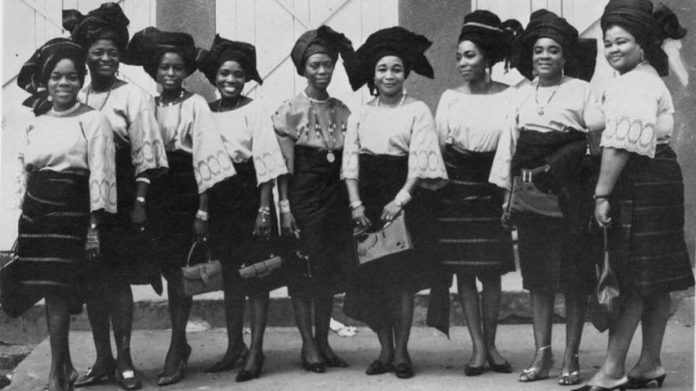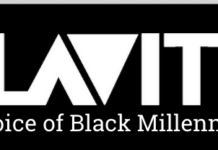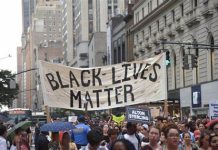The Evolution of African American Fashion: A Journey Through History – Fashion refers to how people present themselves, their vibe, and indeed, their mood in the community. Clothing for African Americans has been way beyond being a cloth; it has been a safeguard of pride, strength, and personality. As seen over the decades, African Americans has been also iconic of cultural, political and social change. From the black art or the Harlem Renaissance all the way to the modern world people of color have always been a creation, strength, and courage.
The Harlem Renaissance: A Bold New Style (1920s–1930s)
A New Era of Expression
African Americans have always been known to acknowledge the Harlem Renaissance which occurred in the1920s and the 1930s. During this stage called the New Negro Movement, black people gained the freedom to express themselves in music, art, literature, and fashion. The movement was based around Harlem, in New York and was a focus for art.
Women’s Flapper-Inspired Fashion
After the Great Migration, the African American community started using fashion to be assertive and stand against the imposed images. Women freed their knees and waists, wearing more revealing flapper-inspired dresses than the ones with fitted, high-length hems. These dresses were always accompanied with sequinned or fringed embellishments which styled the dresses with elegance and shimmer. The women also wore Cloche hats, long pearl necklaces and feather boas which added drama as well as sophistication to the ensemble.
Also read: Top Scholarships for Black Students in 2025 | African American Scholarships
Men’s Tailored Suits and Zoot Suits
There was also dynamic changes in the men’s fashion style. Businessmen wore fancy tailored suits of silk and wool and this was associated with power and sophistication. Zoot suits were very popula,r especially among young male individuals and included big jacket and very loose trousers. Playing the role of elegant hats and shiny shoes, the zoot suit emerged as a signifies of rebellion and freedom.
Jazz Performers and Fashion
Fashion this time was not only between costumes; it was an embodiment of the lively Harlem Renaissance. Jazz performers such as Duke Ellington had formal suits on while performing and performers such as Josephine Baker dressed glamorous while performing. Fashion of this era depicted the talents and self-sufficiency of African Americans and was memorable in American society.
Adapting to Hard Times: The 1940s and 1950s
Fashion in the Face of Economic Challenges
African Americans faced economic crises in the 1930s with the Great Depression and in the 1940s the Second World War. These sorts of conditions affected fashion making it easier and at the same time practical. Still, they did not cease to look for possibilities of manifesting one’s own style and personality.
The Bold Statement of Zoot Suits
The use of the zoot suit was however popular among the young men in the 1940s. This was for the most part exaggerated and became a loud statement of the fashion label against the norms of society. It also became a way to stand out and have pride in a situation that the people may not of been terribly happy with.
Church Attire and Community Pride
Clothing for going to church especially on Sundays was greatly valued by the African Americans in the 1950s. In many respects Church was not only a sacred place but also exhibiting dignity and pride. The women wore elegant dresses, and the men wore formal suits and flashy hat; women also wore ‘flattering’ hats. These styles represented respectability and togetherness or unity.
The Civil Rights Movement: Fashion with Purpose
New meaning of clothing came during the Civil Rights Movement in the 1950s and 1960s. The civil rights leaders such as Martin Luther King Jr. dressed formally and solemnly to try and portray power. Such an approach to fashioning sent a positive message of dignity and determination negating other bad perceptions of this movement and proving the moral right of this movement.
The Black Power Movement: Pride in African Heritage
Celebrating Afro Hairstyles and Dashikis
The Ames and African-American pride in the black community emerged in the periods of the 1960s and the 1970s. The Black Power Movement encouraged Blacks to come out and celebrate their heritage and one of the avenues which was promoted was through fashion. Loud and Afrocentric creations seemed to express pride and togetherness.
Activists and Afrocentric Fashion
The Afro with other informal hairdos was considered as rebellious and expression of self self-affirming love for natural hair textures. This hairstyle was therefore one way of saying no to societal imperialism and embracing the African look. In addition to natural hair, dashikis colored garments with African traditional designs also became the order of the day. These outfits were mostly combined with large jewelry giving a very daring look.
These styles were brought to life by activists – such as Angela Davis and the Black Panther Party. For Black people, their Afrocentric fashion was the embodiment of defiance and Black liberation, and the fight for justice. Fashions of this era focused on African cultural aspects, and everybody was encouraged to fight the discriminative measures.
Hip-Hop and Streetwear: A New Wave of Style
The old exposure of hip-hop music culture during the 1980s and 1990 s drastically affected fashion among African American people. This style integrated comfort, invention, and popular tendencies of the city, so it was functional and esthetic here.
Hip-hop clothing tradition embraced baggy jeans, large shirts, branded sport shoes wearing gold chain necklaces. This means that artist like Run-D.M.C., Tupac Shakur and Biggie Smalls help to determine did people wear. For instance, Run-D.M.C. brought out Adidas tracksuit and shell-toe sneakers and started a trend around the whole world melting music and style.
Some designers that mattered a lot during this period included Dapper Dan. It was originally a luxury brand powerhouse where he made premium material streetwear products for musicians and sportsmen. His designs responded to the high fashion to make it affordable to urban societies and the incorporation of new style to luxury.
Hip-hop fashion did become the international thing where African American run creativity and culture all over the earth. Besides its’ marking individuality it also established the link between fashion and music making them even more significant and important.
Today: A Blend of Heritage and Modern Style
Today, African American fashion has both historical and contemporary aspects. Both designers and artists take history as their basis but give more contemporary features. African designs are incorporated into the normal patterns, so the clothes are both historical and fashionable.
The streetwear momentum continues; Black-owned brands stand in the fashion kingdom. There’s nothing like a good sneaker, hoodie or graphic tee, all of which provide comfort and the aspect of style. On the one hand, formal and Afrocentric styles remain members of the African culture and pride outfits.
African American Influence in Fashion
Today African American fashion can be observed in red carpet events, on city streets, and almost any other places. Everyone from movie stars and sports figures to normal people utilize fashion to express themselves and share their personal narratives. Now, the Black talent has been breaking barriers, and previously Louis Vuitton’s menswear designer Virgil Abloh is no exception.








